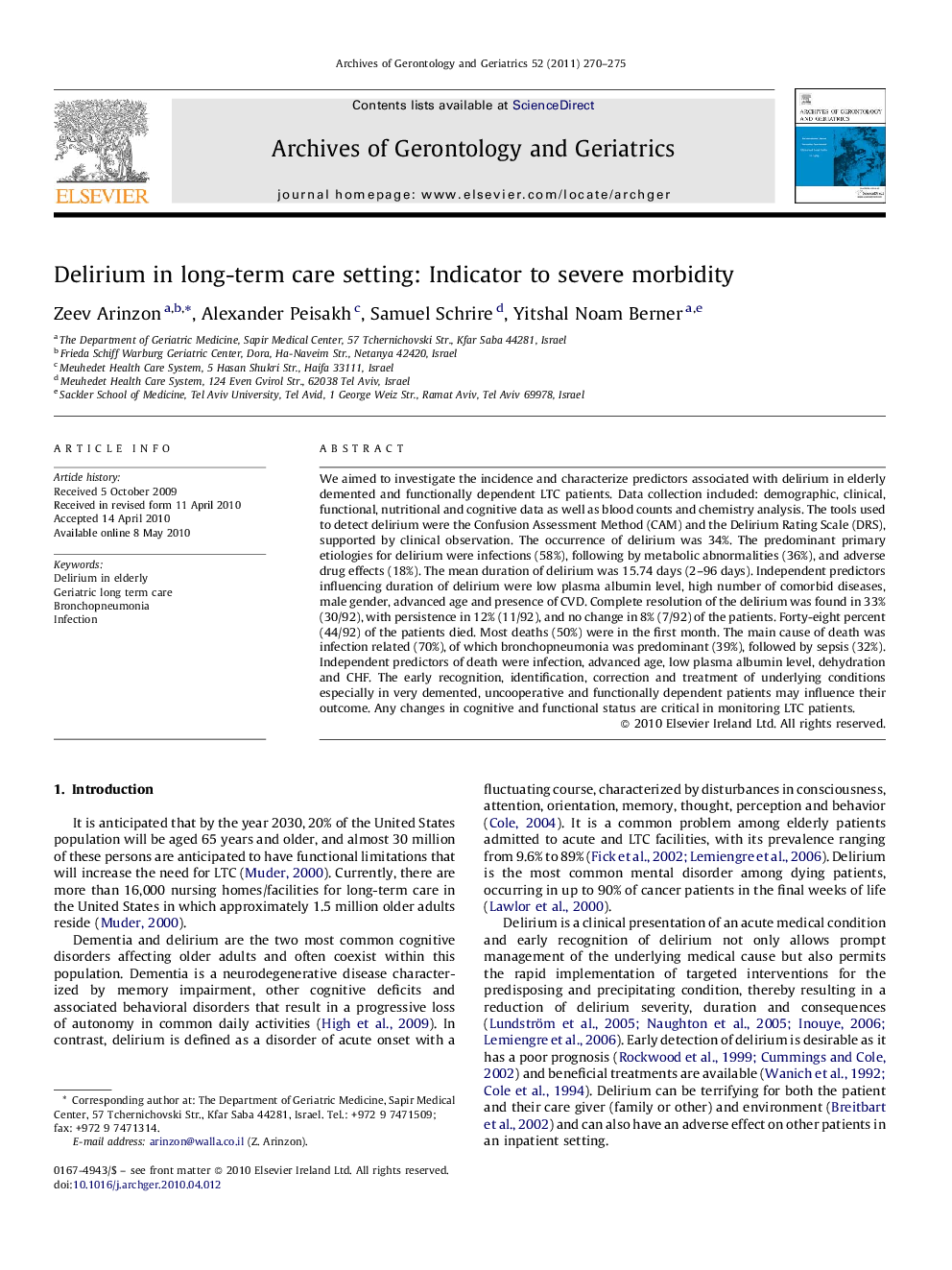| Article ID | Journal | Published Year | Pages | File Type |
|---|---|---|---|---|
| 1903539 | Archives of Gerontology and Geriatrics | 2011 | 6 Pages |
We aimed to investigate the incidence and characterize predictors associated with delirium in elderly demented and functionally dependent LTC patients. Data collection included: demographic, clinical, functional, nutritional and cognitive data as well as blood counts and chemistry analysis. The tools used to detect delirium were the Confusion Assessment Method (CAM) and the Delirium Rating Scale (DRS), supported by clinical observation. The occurrence of delirium was 34%. The predominant primary etiologies for delirium were infections (58%), following by metabolic abnormalities (36%), and adverse drug effects (18%). The mean duration of delirium was 15.74 days (2–96 days). Independent predictors influencing duration of delirium were low plasma albumin level, high number of comorbid diseases, male gender, advanced age and presence of CVD. Complete resolution of the delirium was found in 33% (30/92), with persistence in 12% (11/92), and no change in 8% (7/92) of the patients. Forty-eight percent (44/92) of the patients died. Most deaths (50%) were in the first month. The main cause of death was infection related (70%), of which bronchopneumonia was predominant (39%), followed by sepsis (32%). Independent predictors of death were infection, advanced age, low plasma albumin level, dehydration and CHF. The early recognition, identification, correction and treatment of underlying conditions especially in very demented, uncooperative and functionally dependent patients may influence their outcome. Any changes in cognitive and functional status are critical in monitoring LTC patients.
